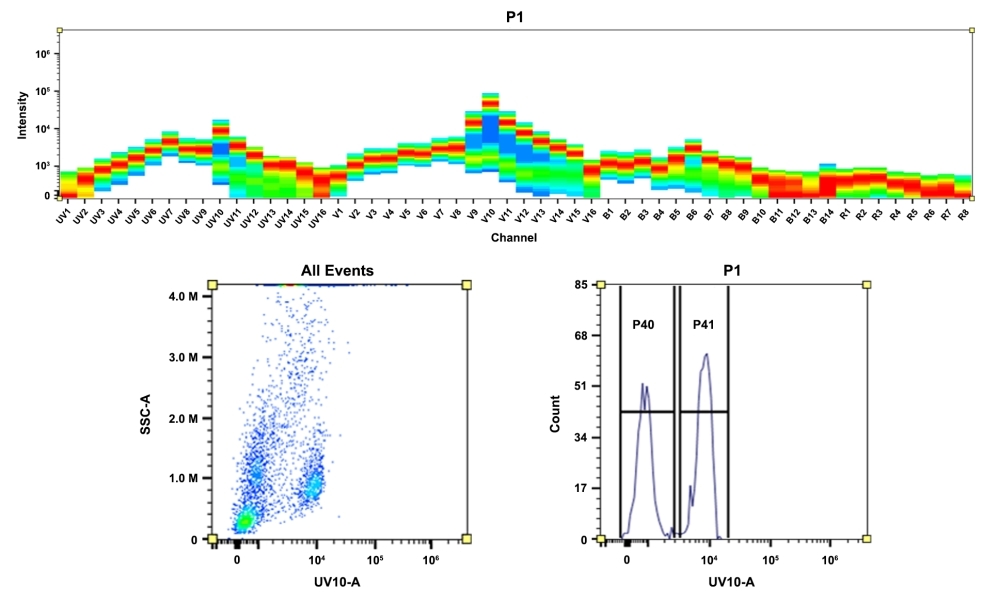mFluor™ UV610 SE
mFluor™ dyes are developed for multicolor flow cytometry-focused applications. These dyes have large Stokes Shifts, and can be well excited by the laser lines of flow cytometers (e.g., 350 nm, 405 nm, 488 nm and 633 nm). mFluor™ UV dyes are optimized to be excited with a UV laser at 350 nm. AAT Bioquest offers the largest collection of fluorescent dyes that are excited by UV laser at 350 nm. mFluor™ UV 610 dyes have fluorescence excitation and emission maxima of ~350 nm and ~610 nm respectively. These spectral characteristics make them a unique color for flow cytometry application. mFluor™ UV 610 SE is reasonably stable and shows good reactivity and selectivity with protein amino groups. mFluor™ UV 610 SE provides a convenient tool to label monoclonal, polyclonal antibodies or other proteins (>10 kDa) for flow cytometric applications with the UV laser excitation.


| Catalog | Size | Price | Quantity |
|---|---|---|---|
| 1649 | 1 mg | Price |
Physical properties
| Molecular weight | 1692.11 |
| Solvent | DMSO |
Spectral properties
| Absorbance (nm) | 589 |
| Correction factor (260 nm) | 0.949 |
| Correction factor (280 nm) | 0.904 |
| Extinction coefficient (cm -1 M -1) | 90000 1 |
| Excitation (nm) | 369 |
| Emission (nm) | 609 |
| Quantum yield | 0.25 |
Storage, safety and handling
| H-phrase | H303, H313, H333 |
| Hazard symbol | XN |
| Intended use | Research Use Only (RUO) |
| R-phrase | R20, R21, R22 |
| Storage | Freeze (< -15 °C); Minimize light exposure |
| UNSPSC | 12171501 |
Contact us
| Telephone | |
| Fax | |
| sales@aatbio.com | |
| International | See distributors |
| Bulk request | Inquire |
| Custom size | Inquire |
| Technical Support | Contact us |
| Request quotation | Request |
| Purchase order | Send to sales@aatbio.com |
| Shipping | Standard overnight for United States, inquire for international |
Page updated on December 15, 2025

